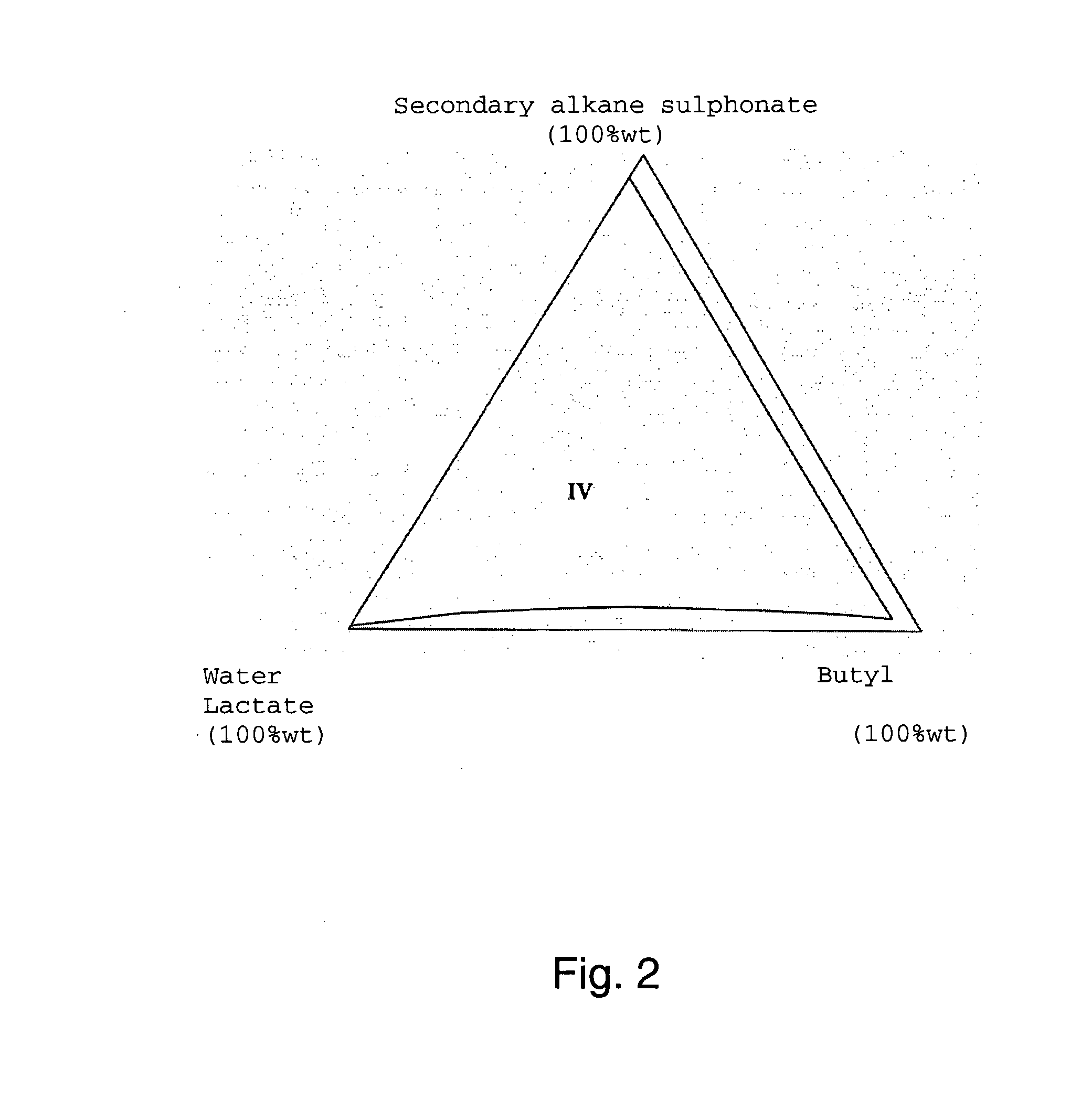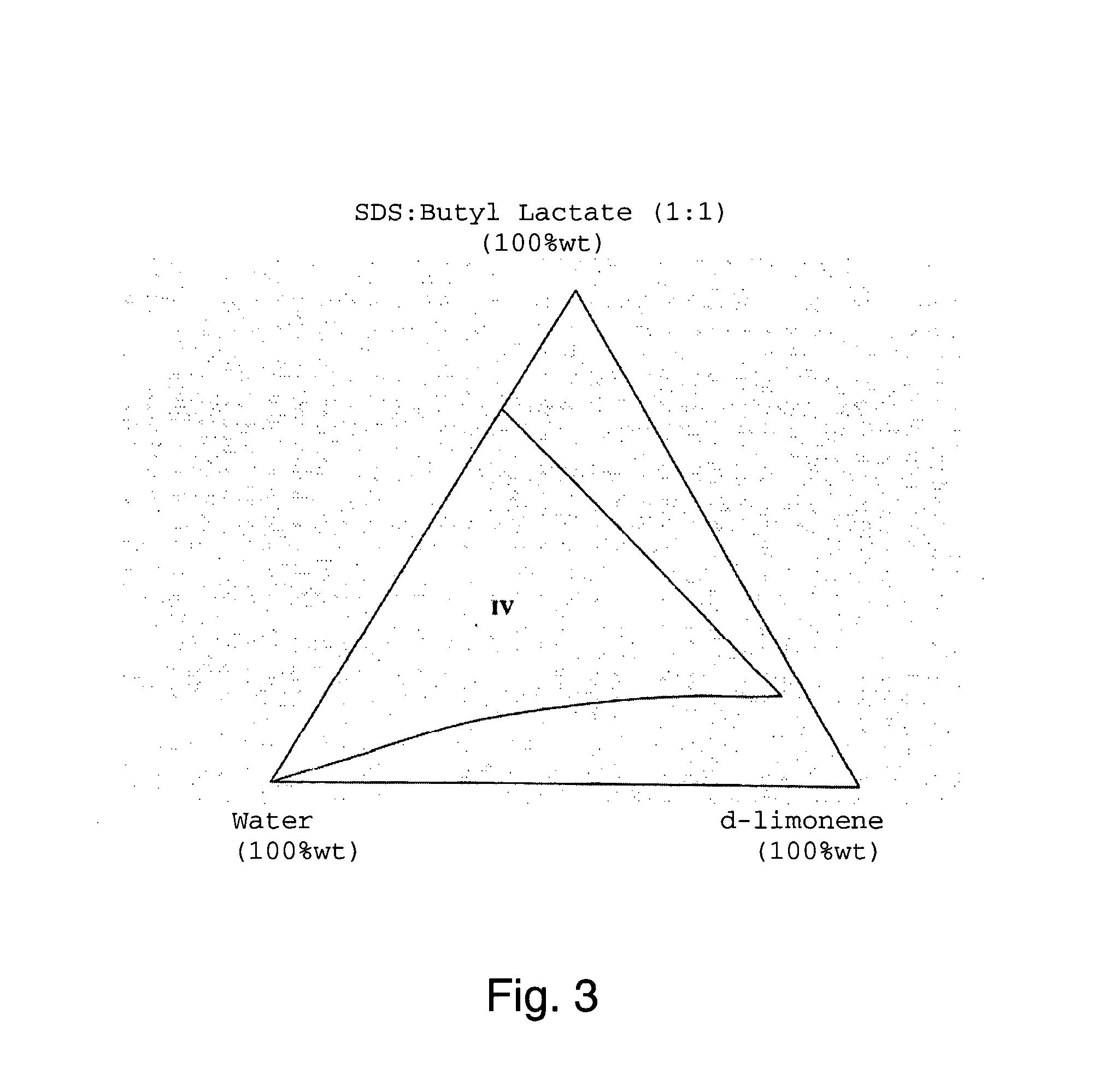Surfactant System Method
a technology of surfactant and microemulsion, applied in the direction of liquid soap, detergent compounding agent, liquid soap, etc., can solve the problems of non-aqueous fluids, complex process using multiple spacers, and the waste of water itself, so as to reduce the risk of engineering blockage, damage, and downtime , the effect of increasing cleaning efficiency
- Summary
- Abstract
- Description
- Claims
- Application Information
AI Technical Summary
Benefits of technology
Problems solved by technology
Method used
Image
Examples
examples
Optimisation of Surface Active Constituents in Microemulsion (Forming) Surfactant Solution Formulations for Use in the Field
[0126] In the past it has been documented that the combination of certain surfactants or the use of single impure surfactants can exhibit reduced temperature instability of microemulsion systems to certain extents. Typically these systems can be stable for a temperature range of circa 50° C. to 75° C. This has been achieved by combining the opposite temperature dependence of ionic and anionic surfactants eg. alcohol ethoxylate surfactants and Aerosol-OT (AOT). This is still used in this industry today combining, for example, butoxy ethanol (BE) with alkyl benzene sulphonic acid. In the latter case the systems are typically stable up to 60-70° C.
[0127] The more commonly used ethoxylated nonionic surfactants are well known to become more hydrophobic and less hydrophilic with increasing temperature. In other words the preferred monolayer curvature becomes more n...
PUM
| Property | Measurement | Unit |
|---|---|---|
| temperature | aaaaa | aaaaa |
| flash points | aaaaa | aaaaa |
| flash point | aaaaa | aaaaa |
Abstract
Description
Claims
Application Information
 Login to View More
Login to View More - R&D
- Intellectual Property
- Life Sciences
- Materials
- Tech Scout
- Unparalleled Data Quality
- Higher Quality Content
- 60% Fewer Hallucinations
Browse by: Latest US Patents, China's latest patents, Technical Efficacy Thesaurus, Application Domain, Technology Topic, Popular Technical Reports.
© 2025 PatSnap. All rights reserved.Legal|Privacy policy|Modern Slavery Act Transparency Statement|Sitemap|About US| Contact US: help@patsnap.com



